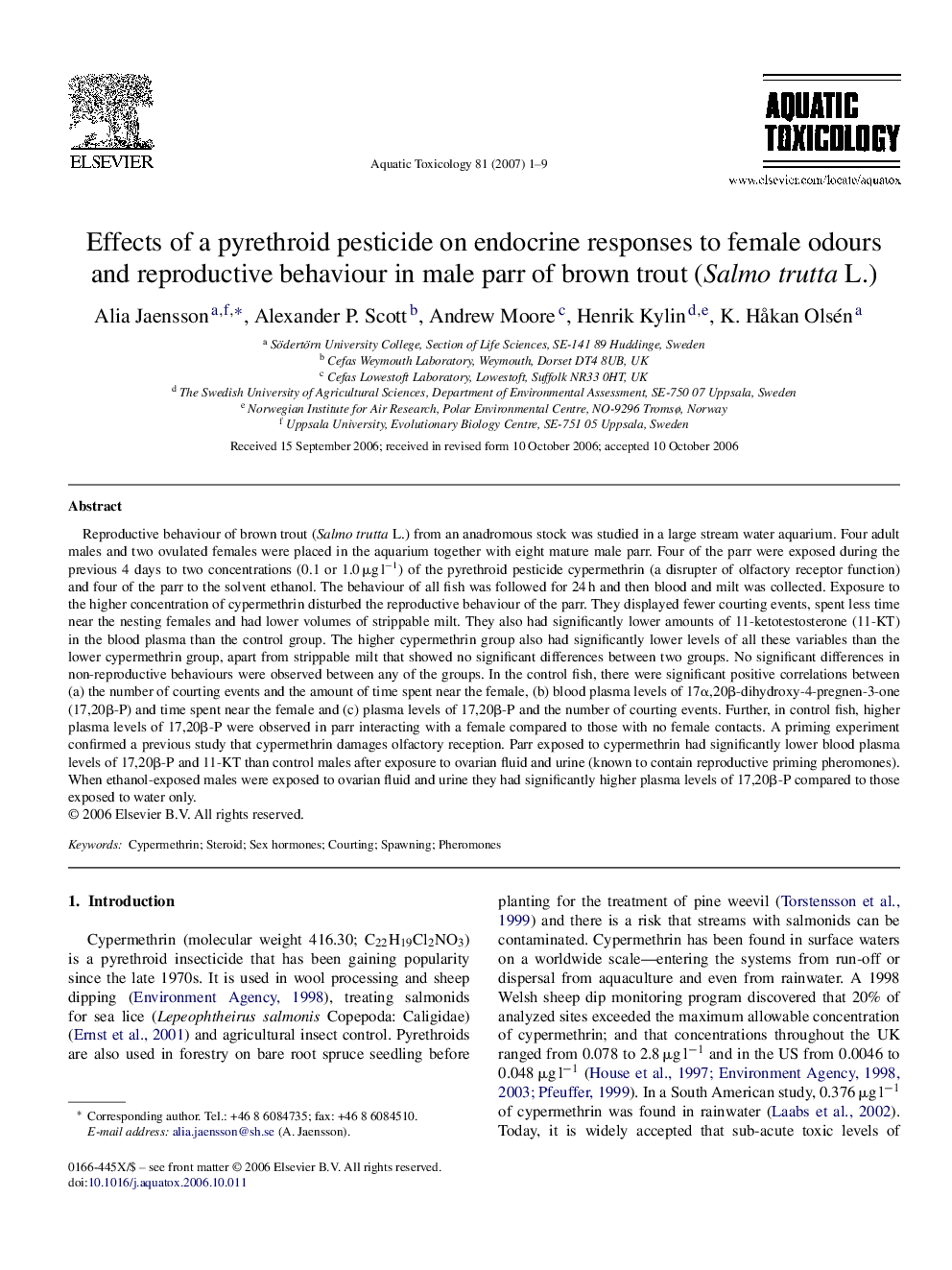| Article ID | Journal | Published Year | Pages | File Type |
|---|---|---|---|---|
| 4531165 | Aquatic Toxicology | 2007 | 9 Pages |
Reproductive behaviour of brown trout (Salmo trutta L.) from an anadromous stock was studied in a large stream water aquarium. Four adult males and two ovulated females were placed in the aquarium together with eight mature male parr. Four of the parr were exposed during the previous 4 days to two concentrations (0.1 or 1.0 μg l−1) of the pyrethroid pesticide cypermethrin (a disrupter of olfactory receptor function) and four of the parr to the solvent ethanol. The behaviour of all fish was followed for 24 h and then blood and milt was collected. Exposure to the higher concentration of cypermethrin disturbed the reproductive behaviour of the parr. They displayed fewer courting events, spent less time near the nesting females and had lower volumes of strippable milt. They also had significantly lower amounts of 11-ketotestosterone (11-KT) in the blood plasma than the control group. The higher cypermethrin group also had significantly lower levels of all these variables than the lower cypermethrin group, apart from strippable milt that showed no significant differences between two groups. No significant differences in non-reproductive behaviours were observed between any of the groups. In the control fish, there were significant positive correlations between (a) the number of courting events and the amount of time spent near the female, (b) blood plasma levels of 17α,20β-dihydroxy-4-pregnen-3-one (17,20β-P) and time spent near the female and (c) plasma levels of 17,20β-P and the number of courting events. Further, in control fish, higher plasma levels of 17,20β-P were observed in parr interacting with a female compared to those with no female contacts. A priming experiment confirmed a previous study that cypermethrin damages olfactory reception. Parr exposed to cypermethrin had significantly lower blood plasma levels of 17,20β-P and 11-KT than control males after exposure to ovarian fluid and urine (known to contain reproductive priming pheromones). When ethanol-exposed males were exposed to ovarian fluid and urine they had significantly higher plasma levels of 17,20β-P compared to those exposed to water only.
